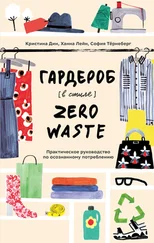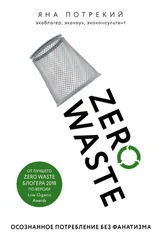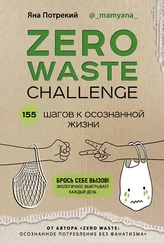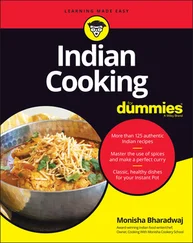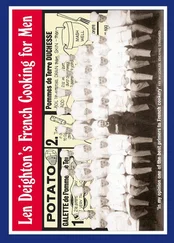How the idea of sustainability fits into a zero waste mindset (see more in Chapter 2)
The three pillars of sustainability in agriculture and how they allow for the efficient use of natural resources to feed hundreds of millions of people
How various sectors of the food supply chain conserve resources and work to reduce food waste
How to analyze your personal food waste habits and create a plan to waste less
How to choose foods with both your budget and health needs in mind
How to organize a zero waste kitchen
How to plan meals, waste less, and cook delicious meals
You may wonder why I cover things like sustainability, the food supply chain, and the U.S. agriculture system that brings you your food. Well, it’s important to know how the environmental piece of reducing food waste fits into the larger picture of where food comes from. There’s a lot of conflicting information about the “best diet,” the many sources of greenhouse gas emissions, and how various sectors impact the environment. Hopefully, this information will give you more to think about.
 Many things impact climate change. This book assumes that the more than 333 million people in the United States have a variety of food budgets and circumstances. This book was written with the broad spectrum of food budgets and food availability, both rural and urban, in mind. The recipes and meal planning strategies I include were designed for everyone — not just those with a specialty grocer down the block — so they can enjoy eating for good health and learn how to waste less.
Many things impact climate change. This book assumes that the more than 333 million people in the United States have a variety of food budgets and circumstances. This book was written with the broad spectrum of food budgets and food availability, both rural and urban, in mind. The recipes and meal planning strategies I include were designed for everyone — not just those with a specialty grocer down the block — so they can enjoy eating for good health and learn how to waste less.
Benefiting from a Zero Waste Approach
Zero waste cooking can save you money, improve your diet quality, and help the environment. You could say it’s a win-win-win! You may be reading this book because you want to do your part to support a healthy planet, or maybe you want to waste less and save money, but you may not be aware that a zero waste approach may also indirectly improve your health. How? Well, there’s money savings in taking a little bit of time to work on your grocery shopping strategy and use of leftovers. And when you become more mindful of food storage, meal planning, and using up fresh fruits and vegetables, you actually end up increasing your consumption of those nutrient-rich foods. Read on, dear reader.
The Environmental Protection Agency (EPA) estimated that, in 2018, 63 million tons of food were wasted, with 40 percent of that coming from households like yours and mine. Check out apps such as Too Good To Go that help connect people in need with surplus food supplies that they can purchase at deeply discounted rates.
Wasting food isn’t just an environmental issue; it’s a social issue, too. It’s estimated that about 10 percent of U.S. households are food insecure at some time during the year. And hunger and undernourishment throughout the world continue to be a major concern.
 Feeding America is an organization that works to reduce food waste and hunger by matching excess food from national food and grocery manufacturers, retailers, government agencies, shippers, packers and growers, and other organizations, with the food banks that need it most. Many agricultural organizations donate milk, meat, and eggs to local food banks and community organizations as well. To get involved, check with your local food bank or go to
Feeding America is an organization that works to reduce food waste and hunger by matching excess food from national food and grocery manufacturers, retailers, government agencies, shippers, packers and growers, and other organizations, with the food banks that need it most. Many agricultural organizations donate milk, meat, and eggs to local food banks and community organizations as well. To get involved, check with your local food bank or go to www.feedingamerica.org/take-action .
Saving green while going green
Sure, you want to save the earth, but don’t forget that creating a zero waste kitchen is also going to save you money. All that food waste adds up to more than $160 billion each year (retail and consumer waste). Some estimate that this equates to about $1,500 a year per household. Whew! That’s lot of missed meal creations.
Just think about all the fun experiences you could buy with the money you’re going to save on your zero waste journey. Or maybe you can donate some of that money to a worthy charity of your choice.
 One way to start working on this right away is to designate a “food scrap bowl” to keep in your refrigerator. This bowl or container can hold things that you normally might throw away (old bananas, carrot tops, bruised fruit, dried-out tomatoes). After a few days, check out what you have and head to Part 3, where you’ll find recipes that are especially versatile for cooking with bits and scraps.
One way to start working on this right away is to designate a “food scrap bowl” to keep in your refrigerator. This bowl or container can hold things that you normally might throw away (old bananas, carrot tops, bruised fruit, dried-out tomatoes). After a few days, check out what you have and head to Part 3, where you’ll find recipes that are especially versatile for cooking with bits and scraps.
 Consider using a community-supported agriculture (CSA) system to purchase seasonal produce from local farmers. The way this works is locally grown produce is shipped to your door weekly, which can save you money on your food bill and saves gas and transportation. You could even split it with a friend or neighbor.
Consider using a community-supported agriculture (CSA) system to purchase seasonal produce from local farmers. The way this works is locally grown produce is shipped to your door weekly, which can save you money on your food bill and saves gas and transportation. You could even split it with a friend or neighbor.
Another great way to save money is by buying “ugly” or imperfect produce. Your local grocer may have a reduced-price shelf. There are several companies that funnel less-than-perfect produce from processors to sell directly to consumers at discounts, too. Keep in mind that farmers and food manufacturers are also always working toward reducing food waste. For instance, a bruised apple doesn’t get bagged, but it goes into the apple juice or applesauce line at the packaging plant. Find more ideas in Chapter 6.
Enjoying better nutrition and health
Using a CSA may also inspire you to enjoy a wider variety of food, but so can simply adopting a zero waste kitchen strategy. Fruits and vegetables are often the items that get forgotten in the refrigerator. Sure, you had big intentions for them when you put them into your grocery cart, but then, oops, a few too many days go by.
When you adopt a better shopping strategy, you’ll soon find you’re getting more creative and seeking out more recipes to use up the food and produce items you have. In the end, that’s a win for nutrition — and the planet!
My nutrition philosophy is to educate about food and nutrition, guide people in how their food choices may impact their personal health and lifestyle, and then allow them to make choices within that framework.
 As you make the most of what you have and you create a plan going forward, your overall diet will likely, coincidentally, improve as well. Consider times when you ordered takeout and would forgo cooking what was in the fridge. A zero waste mindset can give you that little nudge you need to rethink some food waste decisions, saving you money and improving your diet. Maybe you still order takeout, but you make a firm plan to cook up the previously planned meal the next day. Another win!
As you make the most of what you have and you create a plan going forward, your overall diet will likely, coincidentally, improve as well. Consider times when you ordered takeout and would forgo cooking what was in the fridge. A zero waste mindset can give you that little nudge you need to rethink some food waste decisions, saving you money and improving your diet. Maybe you still order takeout, but you make a firm plan to cook up the previously planned meal the next day. Another win!
Full disclosure: I’m an omnivore. I enjoy a variety of food, and my diet has the framework of a Mediterranean DASH diet (check out the latest edition of DASH Diet For Dummies ). This is what works for both my health and my eating preferences.
Instead of pressuring fellow omnivores to avoid meat, I’d rather encourage them to add more vegetables and grains to their dishes, so in this book, I try to offer a variety of recipes that may appeal to many palates. In Part 3, you find many plant-based recipes, such as the Penne Bake with Veggies, Bow Ties with Peas, Lentil-Stuffed Zucchini, and the Mushroom Turkey Burgers. Of course, you may find Roast Pork Loin with Apples and Onions, Grilled Marinated Flank Steak, and Foil-pack Greek Chicken with Olives, Feta, and Peppers to be appealing as well.
Читать дальше

 Many things impact climate change. This book assumes that the more than 333 million people in the United States have a variety of food budgets and circumstances. This book was written with the broad spectrum of food budgets and food availability, both rural and urban, in mind. The recipes and meal planning strategies I include were designed for everyone — not just those with a specialty grocer down the block — so they can enjoy eating for good health and learn how to waste less.
Many things impact climate change. This book assumes that the more than 333 million people in the United States have a variety of food budgets and circumstances. This book was written with the broad spectrum of food budgets and food availability, both rural and urban, in mind. The recipes and meal planning strategies I include were designed for everyone — not just those with a specialty grocer down the block — so they can enjoy eating for good health and learn how to waste less. Feeding America is an organization that works to reduce food waste and hunger by matching excess food from national food and grocery manufacturers, retailers, government agencies, shippers, packers and growers, and other organizations, with the food banks that need it most. Many agricultural organizations donate milk, meat, and eggs to local food banks and community organizations as well. To get involved, check with your local food bank or go to
Feeding America is an organization that works to reduce food waste and hunger by matching excess food from national food and grocery manufacturers, retailers, government agencies, shippers, packers and growers, and other organizations, with the food banks that need it most. Many agricultural organizations donate milk, meat, and eggs to local food banks and community organizations as well. To get involved, check with your local food bank or go to 